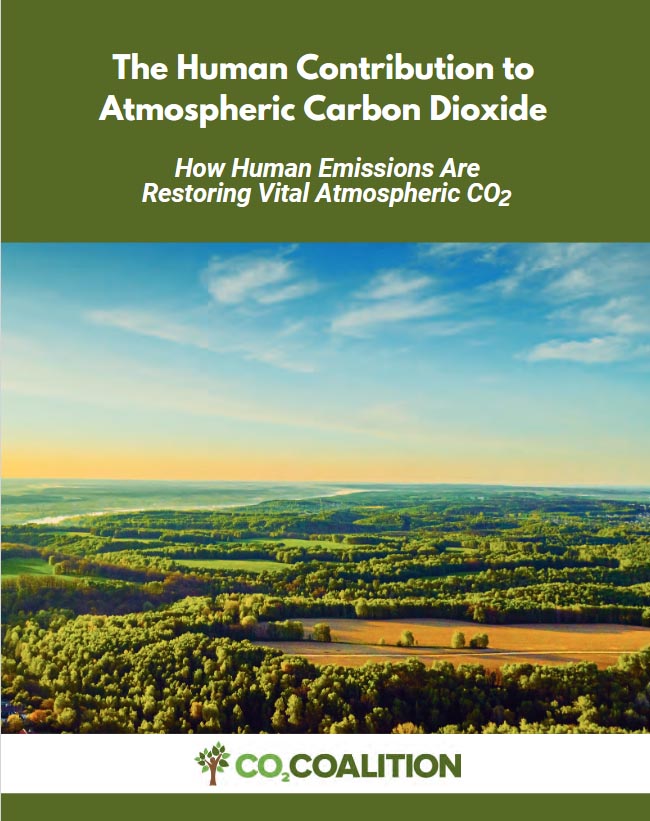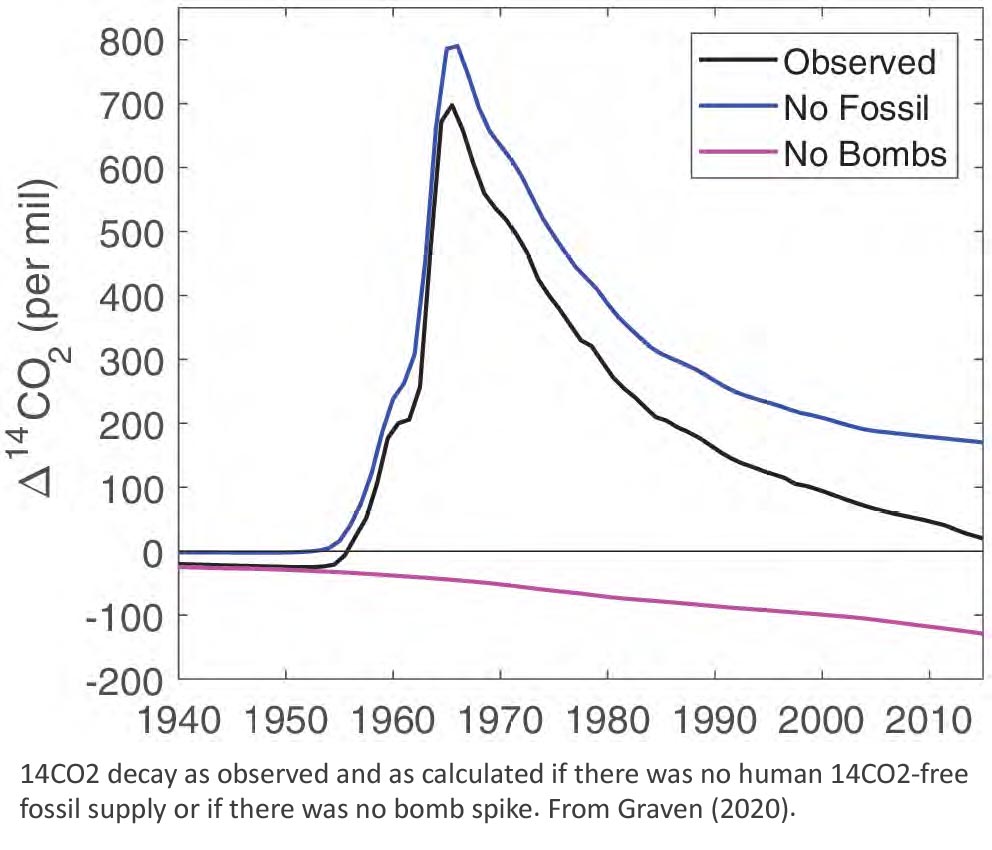
Sinds het begin van de industriële revolutie eind 1700 is de gemiddelde concentratie van kooldioxide (CO2) in de atmosfeer met ongeveer 140 ppmv toegenomen tot de huidige hoeveelheid van ongeveer 420 ppmv. Dat is veel hoger dan de concentraties van de afgelopen 800.000 jaar, die volgens ijskerndata zelden boven de 300 ppmv uitkwamen.
Regelmatig laait er weer de discussie op over de vraag of de recente toename van het atmosferisch CO2 wel (grotendeels) mensenwerk is en geen natuurlijke verklaring heeft. Ferdinand Engelbeen schreef onlangs met twee collega’s van de website CO2-Coalition een artikel over de herkomst van de recente CO2 toename in de atmosfeer. Volgens de drie auteurs is het onomstotelijk aangetoond dat de huidige toename van CO2 voornamelijk te wijten is aan antropogene uitstoot.
Veel interessanter is de vraag wat voor invloed méér CO2 heeft op het aardse klimaat. Daarbij spelen publicaties van o.a. William Happer, Van Wijngaarden, Lindzen en anderen een belangrijke rol. Méér CO2 zal waarschijnlijk nauwelijks nog invloed hebben op de stralingsbalans van de aarde. Het is intussen duidelijk geworden dat de toename van het CO2 gehalte wel gezorgd heeft voor een flinke toename van de plantengroei, inclusief de voedselproductie.
Voor wie geïnteresseerd is in de discussie over de herkomst van de CO2 toename raad ik het artikel sterk aan! Het is hier te downloaden.
Dit zijn kort de bevindingen in het artikel:
Mass Balance Conclusions
Anthropogenic emissions of fossil CO2 are much larger than the measured increase in the amount of CO2 in the atmosphere. Therefore, the natural CO2 “sinks” are nearly always larger than natural CO2 “sources.” Any theory that leads to a substantial increase of CO2 in the atmosphere due to natural factors violates the mass balance and thus cannot be correct.
13C/12C Conclusion
The strong decrease of the 13C/12C ratio in the atmosphere and ocean surface waters excludes any huge contribution of the (deep) oceans to the CO2 increase in the atmosphere.
14C/C Conclusion
The decrease of the 14C/C ratio in the atmosphere supports the fact that fossil fuels are the cause of the CO2 increase in the atmosphere.

Oxygen Conclusions
The production of extra O2 in the atmosphere excludes a net contribution from the whole biosphere to the CO2 increase in the atmosphere. As both oceans and vegetation are net sinks for CO2 and other sinks/sources (carbonate rock weathering, volcanic eruptions and vents) are much slower and/or smaller, this also means that nature as a whole is a net sink for CO2, and thus cannot be a net source.
Ocean pH and pCO2 Conclusions
The increasing pCO2 in the oceans and the accompanying slight reduction of ocean alkalinity indicates that the oceans are a CO2 sink. Therefore, the oceans are not a source for the modern increase of CO2 in the atmosphere. This adds to the overall evidence that human emissions are the main cause of the increase of CO2 in the atmosphere.
Process Characteristics Conclusions
From the process characteristics, it is clear that the observed increase of CO2 in the atmosphere follows the acceleration of human emissions. Temperature fluctuations can cause only very small deviations (1.2 ppmv for the extremes like the 1991 Pinatubo eruption or the 1998 El Niño) from the over-100-ppmv trend line since 1958. There are two main processes that influence the CO2 levels in the atmosphere beyond time frames of a few years: human emissions and temperature. The latter accounts for a maximum of 10%, or 13 ppmv, of the current increase since the start of the Industrial Revolution. The main cause of the observed 130-ppmv increase is the 210-ppmv one-way human addition.
Ice Core CO2 Conclusions
Antarctic ice cores capture the highest quality measurement of CO2 concentrations prior to the modern measurement record, which began in 1958. They provide a continuous global CO2 record over the past 800,000 years. Ice core CO2 data are accurate, repeatable and overlap well with modern CO2 measurements representing well-mixed atmospheric global CO2 levels. CO2 measurements from ice cores show that CO2 over the past 800,000 years rarely exceeded 300 ppmv, which is much lower than present day concentrations of about 420 ppmv.
Stomata CO2 Conclusions
CO2 concentrations from plant stomata are indirect proxy measurements consisting of discontinuous records. The uncertainties and shortcomings associated with plant stomata CO2 reconstructions mean that they are less reliable than Antarctic ice core measurements for determining paleo-atmospheric global CO2 concentrations. The main value of such studies is to test and calibrate methodologies for application to earlier time periods, for which ice core data is unavailable.
Historical CO2 Conclusions
A huge peak of +70 ppmv CO2 (150 PgC) in the atmosphere around 1942 is physically impossible, and the claim is based on measurements at places contaminated by huge local CO2 sources. It also conflicts with reliable highresolution ice core CO2 measurements, and with several proxies over the same period.
